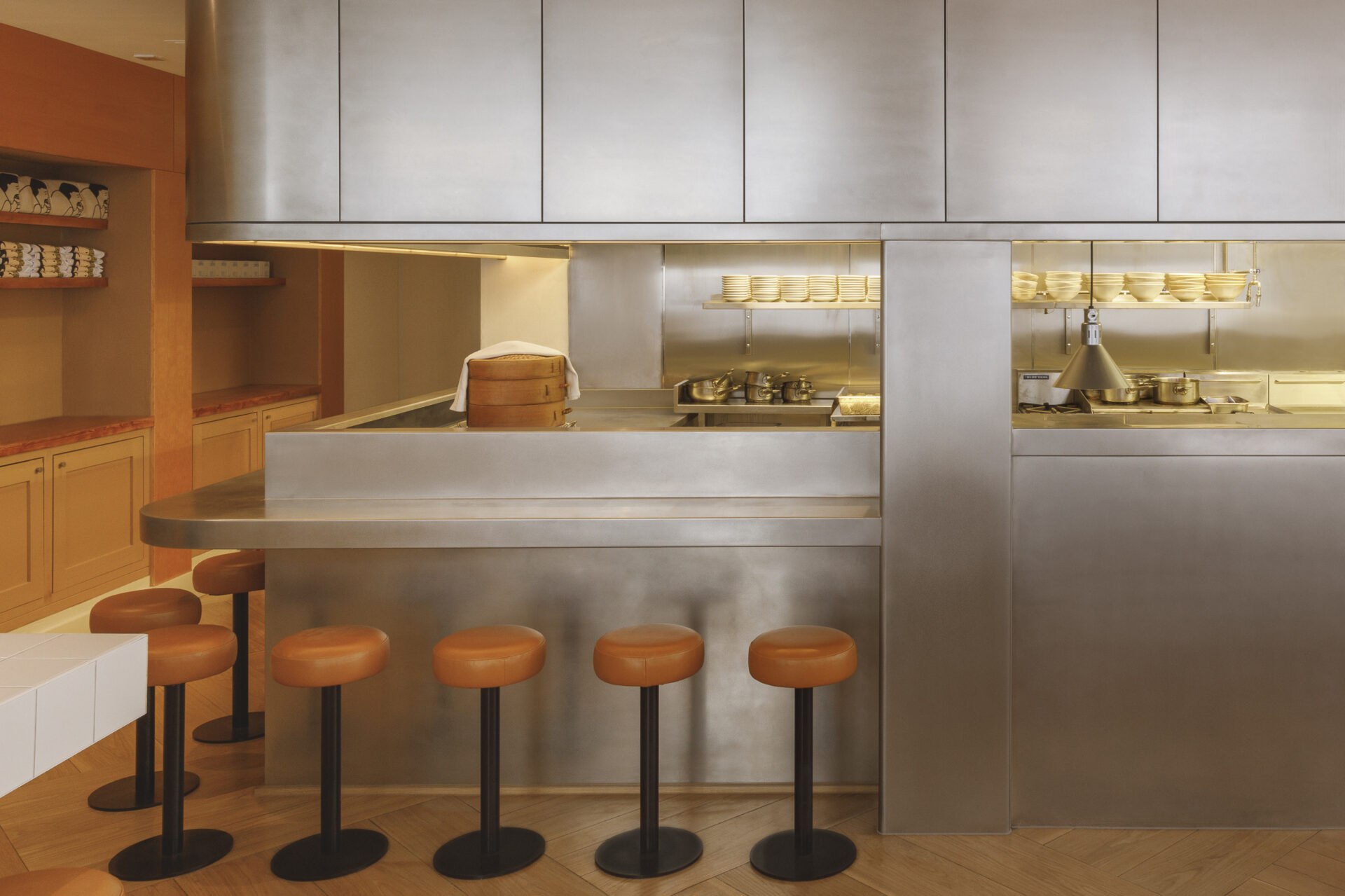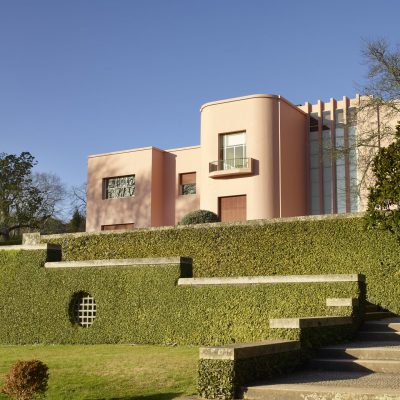Erchen Chang Q&A
Bao has built an immersive visual world around its restaurants, from its interiors to its logo and online graphics. As two further outposts open, its co-founder explains how her memories of Asian eateries get filtered and translated in to something new

DESIGN ANTHOLOGY UK: How do you divide up the creative roles between you and your co-founders Shing Tat and Wai Ting Chung?
ERCHEN CHANG: I’m in charge of overall creative direction, which includes the creative for the food as well as overseeing the artistic side of the brand. Shing is the CEO and looks after the direction and strategy of the business but has a keen eye on innovation and design. Wai Ting is the like the mother of Bao – she looks after the people. All three of us came from creative backgrounds and that is a value that we keep imbued in the business.
DA: How has that creative background given you a different perspective on running restaurants?
EC: I’m not a trained chef and I wouldn’t really call myself a chef, but fundamentally the food at the end of it needs to taste amazing. What art school gave us was a different perspective on how and why we create something. Not just looking at how to create food with innovation or produce but also step back and look at how we tell stories about the food. The food is created and designed with purpose and sites in mind, so it’s part of a bigger story.
Back in 2014 before we opened Bao Soho, we drew a map of our world and envisaged how our restaurants exist in that world. What really excited us was this sense of world building and storytelling, and the food is only one part of the brand that tells this story.

DA: Bao’s ‘lonely man’ logo is famous in his own right. Why has he become so important and enduring to the brand?
EC: The lonely man came from my artwork Rules to be a Lonely Man. When we first started, we always had a vision of creating this Bao world that is beyond restaurants, we imaged what sort of restaurants he loves going to, music he listens to, how he relaxes and what his guilty pleasures are.
There is a sadness when looking at the Bao Man – but it’s open for interpretation. In our logo, the lonely man is actually enjoying the bao so much that he’s about to shed a tear of joy. There is an element of dark humour or cheekiness in what we do – it’s important to have fun and we want our diners to feel that. At the same time, loneliness is also a key part of our brand and we want to look at the positives of loneliness – self-reflection, making it accessible and easy for solo dining.
DA: Why go for a slightly separate identity when it comes to the interiors of each restaurant?
EC: From the start of our journey as restaurateurs, we have always been inspired by our travels in Asia, particularly Taiwan and Japan, and each of our restaurants are inspired by different slices of Asian culture. As part of the storytelling [around that], the interiors have a large part to play. It’s like an anthology series: the constant is the Bao, yet each restaurant is a different approach or genre of eating. On a personal level, it’s important that we keep innovating and that also includes the creativity involved in coming up with something new.



There is an element of dark humour or cheekiness in what we do – it’s important to have fun and we want our diners to feel that
DA: Are the interiors meant to be recreations of those places, or something more idealistic – filtered through your own recollections of them?
EC: We are constantly mesmerised by these memories of ours and recreate them through our own lens. We like to use these concepts as a starting point and point of reference for our restaurants and while our aim is to create that experience that transports you, it’s not to create a direct copy of the references we take.
There is definitely an underlying style that connects each restaurant, especially with our love of timber, but we like to push the boundaries and test how far we can go with the design that is unique to the concept but also still grounded, so it is recognisable as Bao. The narrative of the lonely man also plays a large part of the design; all the spaces are designed as if the Bao Man would eat there.
DA: What’s behind the design for the new Cafe Bao in Kings Cross?
EC: It is inspired by the kissaten western-style cafes you can find in Asia: it’s a type of place that is disappearing fast, similar to the pie and mash shops in London, but its heritage is growing a new wave of nostalgia. A restaurant called Bolero was the first and now oldest western-style cafe in Taiwan and it’s got such a history to it. It feels as though time has been frozen – in a good way. I love the decor, the old waiters and mostly the old menu. So we took this as the starting point and started our collaboration with [interior design studio] Macaulay Sinclair.
The building is a new build with tall ceilings and immediately we wanted to make use of the height to create a mezzanine level and create a dynamic energy that flows across the restaurant. There is a large open plan dining space, a bakery and bar counters watching over the dining floor. Upstairs we have a workshop space where people can come and learn to make baos or use it as private dining room.



DA: What about the new Bao Noodle Shop in Shoreditch?
EC: These references are taken directly from Taiwanese noodle houses and karaoke rooms. The frequent use of white tiles and metal surfaces in noodle houses in Taiwan means it’s easy to maintain in the hot and humid weather. We have decided to go for a slightly larger tiles to give a visual impact of a set-like space, and, together with the fat red low stools, it gives an illusion of cartoonish proportions, which is something we love playing with – cute, round, subtle proportion is everything.
We have stripped back the other elements of a typical noodle shops to allow these key features to surface and be the star of the space. The metal curved bar looking into the kitchen is something inspired by the theatrics of noodle bar. Watching chefs boiling noodles is always the most therapeutic or entertaining moment for me. I also love the idea of single diners coming in sitting at the metal bar, slurping noodles and chatting to our chefs for recommendations.
We have loved using illustrations in our virtual spaces such as websites and social media. We’ve tried to keep the interiors of the restaurant quite pared back, but with the karaoke room, it’s a different story – it’s our escape into making something different. The use of pixelated Bao and drinks items or the pixelated running Bao man printed as a pattern on the wallpaper give the room an old-school KTV [karaoke television] atmosphere.






